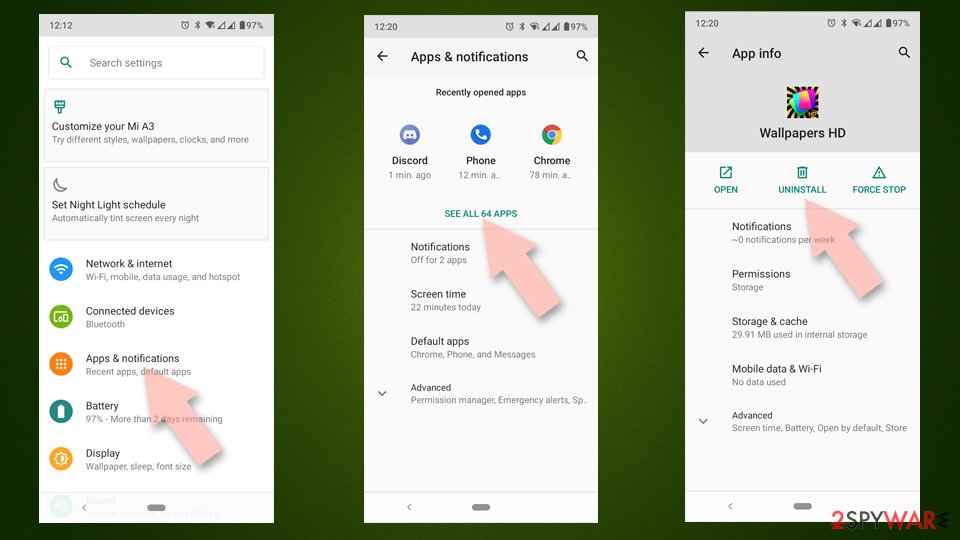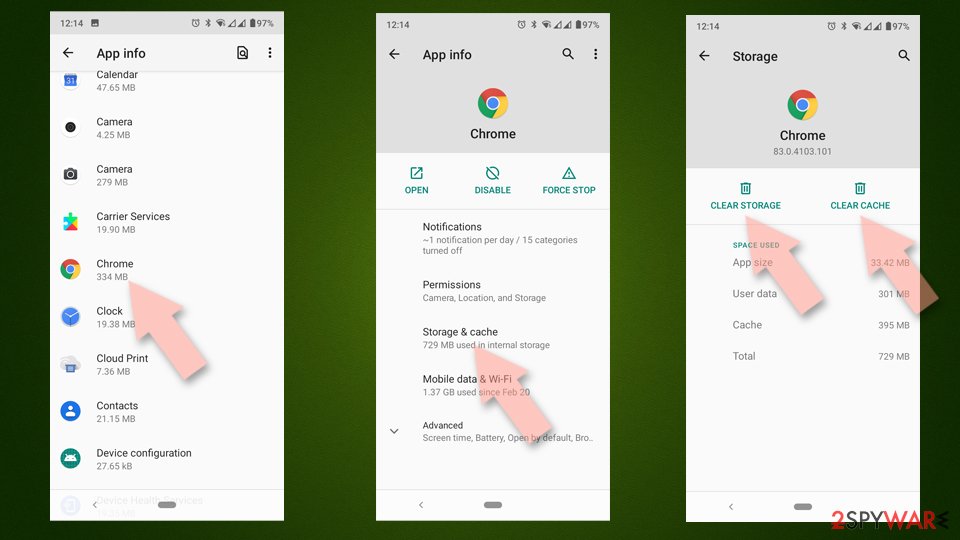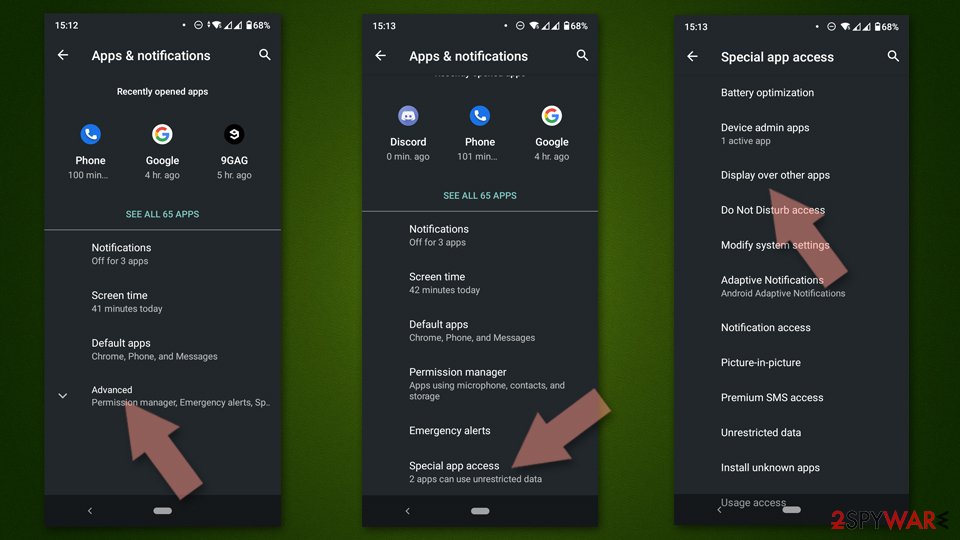Testalloon.work (Virus Removal Guide) - Free Instructions
Testalloon.work Removal Guide
What is Testalloon.work?
Testalloon.work – a website that tries to deceive its visitors into allowing its notifications

Testalloon.work is a dangerous website that will try to push its notification to show you the alleged latest sports news. In fact, if the Allow button is pressed, your computer will display a lot of advertisements, with some of them popping up even when your browsers are closed, i.e., directly on your desktop or phone screen.
In some cases, visitors might be tricked to subscribe to the site's notifications by clicking the Allow button to prove that they're not robots or to watch some imaginary breaking news video. Malicious website authors use this technique to hoodwink gullible people. Testalloon.work pop-up ads might be deceptive and misleading and cause redirects to malicious portals.
If you have been redirected to this website, it might indicate that a potentially unwanted program (PUP) is installed on your device. The same goes for if you've clicked on any of the ads. Luckily, these issues can be easily fixed with our free instructions posted at the bottom. But if you want to know how to evade PUPs in the future, keep reading this article.
| name | Testalloon.work |
|---|---|
| Type | Rogue website, push notification virus, adware |
| IP address | 34.196.151.230 |
| Symptoms | Intrusive pop-up ads appear directly on the desktop or phone screen, slower performance, redirects to questionable sites |
| Risks | Deceptive ads can lead to additional PUP installation, and redirects can lead to hazardous sites where private information might be drawn out |
| Distribution | Software bundles, misleading ads, fake installers |
| Removal | Users must scan their devices with trustworthy anti-malware tools that are compatible with their systems |
| Repair | Powerful software like the FortectIntego system repair app should be used to wipe all tracking cookies along with other browser-related data and to fix any system issues |
Testalloon.work push notification virus can affect practically any device connected to the internet and has a web browser – Mac or Windows computers, cell phones with Android or iOS. The website isn't malicious itself, as there are no malicious scripts in it.
But a whole another deal is when it comes to Testalloon.work ads. First of all, they are intrusive and will start popping up as soon as you click the Allow button. Second, the shown ad contents have nothing in common with the website you'll be redirected to if you click on it. For example, a breaking news story ad might redirect you to:
- online gambling,
- gaming,
- adult websites,
- other PUP portals,
- fake update sites, etc.
As people don't visit such sites purposely, their device might be infected with adware or other PUPs that cause redirections. This type of software is installed on devices using sneaky techniques, such as deceptive ads, that tell you that the tool your about to install will greatly increase your browsing experience or with software bundles.
The best way to avoid potentially unwanted programs, such as Fastcaptchasolver.com virus, SuperPDFSearch virus, X2convert.com virus, and others, is to download desired software directly from its creators instead of third-parties, avoid shady websites, and never believe ads that claim your computer is infected with some type of virus.

To completely remove Testalloon.work virus, you will need a trustworthy anti-malware tool. Our cybersecurity team highly recommends using either SpyHunter 5Combo Cleaner or Malwarebytes. Both of these security tools will detect the threat and eliminate it. Furthermore, they will prevent PUPs and malware from gaining entry to your device in the future.
When Testalloon.work removal is completed, you should clean up your device and restore any corrupted system files and settings. If left unattended, these issues might cause freezing, crashing, severe lag, and other performance irregularities. IT experts[1] suggest using the powerful FortectIntego system tune-up tool or similar apps to fix and prevent these problems.
Enhance your cybersecurity level to avoid malware and PUPs
PUPs and malware, such as Trojans,[2] ransomware,[3], and others, have been around for decades, and they won't go away any time soon. In fact, the attacks are only getting more common and severe. And although various tech companies and institutions try to make the internet a safer place, it's difficult to keep up with hackers.
That's why computer users should take matters into their own hands. Our team has compiled a list of suggestions that would significantly increase your online security, thus hopefully preventing all kinds of malicious software from causing you massive headaches:
- Please install the latest updates to your Operating System as soon as they become available. Do that for all software installed on your pc.
- Procure professional anti-malware software. Update its virus database regularly and scan your device at least once a week.
- Store backups of all essential information. If your AV tool fails to stop an infection, data can be quickly restored.
- Maintain system files and settings by frequently using a robust system tune-up tool.
- Read our articles to find out the most common ways hackers are distributing their malware.
Using professional anti-malware tools to remove Testalloon.work from infected devices
Whether you're visiting Testalloon.work ads website willingly or you're redirected to it, the Allow button enabling its notifications shouldn't be pushed. Only subscribe to notifications of legitimate portals that won't bombard your screen with deceptive spam and ads. And remember that no legit site will force you to click the Allow button to reveal some hidden content or breaking news.
To remove Testalloon.work from any device, you have to use trustworthy anti-malware software compatible with your machine. Open your security tool and update its virus database. Then scan the entire system. Stick to what the software recommends to eliminate.
Afterward, see our guides below to finish Testalloon.work removal manually by removing it from any browser, including Safari, Chrome, Firefox, etc. Once that's done, run system diagnostics with a powerful system optimizer to clean all tracking cookies and restore modified system values.
You may remove virus damage with a help of FortectIntego. SpyHunter 5Combo Cleaner and Malwarebytes are recommended to detect potentially unwanted programs and viruses with all their files and registry entries that are related to them.
Getting rid of Testalloon.work. Follow these steps
Uninstall from Windows
Instructions for Windows 10/8 machines:
- Enter Control Panel into Windows search box and hit Enter or click on the search result.
- Under Programs, select Uninstall a program.

- From the list, find the entry of the suspicious program.
- Right-click on the application and select Uninstall.
- If User Account Control shows up, click Yes.
- Wait till uninstallation process is complete and click OK.

If you are Windows 7/XP user, proceed with the following instructions:
- Click on Windows Start > Control Panel located on the right pane (if you are Windows XP user, click on Add/Remove Programs).
- In Control Panel, select Programs > Uninstall a program.

- Pick the unwanted application by clicking on it once.
- At the top, click Uninstall/Change.
- In the confirmation prompt, pick Yes.
- Click OK once the removal process is finished.
Delete from macOS
Remove items from Applications folder:
- From the menu bar, select Go > Applications.
- In the Applications folder, look for all related entries.
- Click on the app and drag it to Trash (or right-click and pick Move to Trash)

To fully remove an unwanted app, you need to access Application Support, LaunchAgents, and LaunchDaemons folders and delete relevant files:
- Select Go > Go to Folder.
- Enter /Library/Application Support and click Go or press Enter.
- In the Application Support folder, look for any dubious entries and then delete them.
- Now enter /Library/LaunchAgents and /Library/LaunchDaemons folders the same way and terminate all the related .plist files.

Remove from Microsoft Edge
Delete unwanted extensions from MS Edge:
- Select Menu (three horizontal dots at the top-right of the browser window) and pick Extensions.
- From the list, pick the extension and click on the Gear icon.
- Click on Uninstall at the bottom.

Clear cookies and other browser data:
- Click on the Menu (three horizontal dots at the top-right of the browser window) and select Privacy & security.
- Under Clear browsing data, pick Choose what to clear.
- Select everything (apart from passwords, although you might want to include Media licenses as well, if applicable) and click on Clear.

Restore new tab and homepage settings:
- Click the menu icon and choose Settings.
- Then find On startup section.
- Click Disable if you found any suspicious domain.
Reset MS Edge if the above steps did not work:
- Press on Ctrl + Shift + Esc to open Task Manager.
- Click on More details arrow at the bottom of the window.
- Select Details tab.
- Now scroll down and locate every entry with Microsoft Edge name in it. Right-click on each of them and select End Task to stop MS Edge from running.

If this solution failed to help you, you need to use an advanced Edge reset method. Note that you need to backup your data before proceeding.
- Find the following folder on your computer: C:\\Users\\%username%\\AppData\\Local\\Packages\\Microsoft.MicrosoftEdge_8wekyb3d8bbwe.
- Press Ctrl + A on your keyboard to select all folders.
- Right-click on them and pick Delete

- Now right-click on the Start button and pick Windows PowerShell (Admin).
- When the new window opens, copy and paste the following command, and then press Enter:
Get-AppXPackage -AllUsers -Name Microsoft.MicrosoftEdge | Foreach {Add-AppxPackage -DisableDevelopmentMode -Register “$($_.InstallLocation)\\AppXManifest.xml” -Verbose

Instructions for Chromium-based Edge
Delete extensions from MS Edge (Chromium):
- Open Edge and click select Settings > Extensions.
- Delete unwanted extensions by clicking Remove.

Clear cache and site data:
- Click on Menu and go to Settings.
- Select Privacy, search and services.
- Under Clear browsing data, pick Choose what to clear.
- Under Time range, pick All time.
- Select Clear now.

Reset Chromium-based MS Edge:
- Click on Menu and select Settings.
- On the left side, pick Reset settings.
- Select Restore settings to their default values.
- Confirm with Reset.

Remove from Mozilla Firefox (FF)
Remove dangerous extensions:
- Open Mozilla Firefox browser and click on the Menu (three horizontal lines at the top-right of the window).
- Select Add-ons.
- In here, select unwanted plugin and click Remove.

Reset the homepage:
- Click three horizontal lines at the top right corner to open the menu.
- Choose Options.
- Under Home options, enter your preferred site that will open every time you newly open the Mozilla Firefox.
Clear cookies and site data:
- Click Menu and pick Settings.
- Go to Privacy & Security section.
- Scroll down to locate Cookies and Site Data.
- Click on Clear Data…
- Select Cookies and Site Data, as well as Cached Web Content and press Clear.

Reset Mozilla Firefox
If clearing the browser as explained above did not help, reset Mozilla Firefox:
- Open Mozilla Firefox browser and click the Menu.
- Go to Help and then choose Troubleshooting Information.

- Under Give Firefox a tune up section, click on Refresh Firefox…
- Once the pop-up shows up, confirm the action by pressing on Refresh Firefox.

Remove from Google Chrome
Delete malicious extensions from Google Chrome:
- Open Google Chrome, click on the Menu (three vertical dots at the top-right corner) and select More tools > Extensions.
- In the newly opened window, you will see all the installed extensions. Uninstall all the suspicious plugins that might be related to the unwanted program by clicking Remove.

Clear cache and web data from Chrome:
- Click on Menu and pick Settings.
- Under Privacy and security, select Clear browsing data.
- Select Browsing history, Cookies and other site data, as well as Cached images and files.
- Click Clear data.

Change your homepage:
- Click menu and choose Settings.
- Look for a suspicious site in the On startup section.
- Click on Open a specific or set of pages and click on three dots to find the Remove option.
Reset Google Chrome:
If the previous methods did not help you, reset Google Chrome to eliminate all the unwanted components:
- Click on Menu and select Settings.
- In the Settings, scroll down and click Advanced.
- Scroll down and locate Reset and clean up section.
- Now click Restore settings to their original defaults.
- Confirm with Reset settings.

Delete from Safari
Remove unwanted extensions from Safari:
- Click Safari > Preferences…
- In the new window, pick Extensions.
- Select the unwanted extension and select Uninstall.

Clear cookies and other website data from Safari:
- Click Safari > Clear History…
- From the drop-down menu under Clear, pick all history.
- Confirm with Clear History.

Reset Safari if the above-mentioned steps did not help you:
- Click Safari > Preferences…
- Go to Advanced tab.
- Tick the Show Develop menu in menu bar.
- From the menu bar, click Develop, and then select Empty Caches.

Uninstall from Android
Uninstall unwanted programs from Android device:
- Go to Settings -> Apps/Applications.
- Expand the full list of the installed apps.
- Scroll through the list and tap on a suspicious application once.
- Tap on it and select Uninstall.

- Reboot the device.
Clear Storage and data files on Android from Google Chrome or other apps:
- Go to Settings > Apps/Applications.
- Expand the full list of the installed apps.
- Tap on Chrome and select Storage & cache.
- Clear storage and clear cache of the app.

If you are seeing ads on top of other apps but are not sure what is causing it, perform the following steps:
- Go to Apps/Applications.
- Tap Advanced.
- Select Special App access.
- Tap on Display over other apps.

- Eliminate apps with these access rights enabled.
Stop browser notifications
Remove unwanted notifications from Google Chrome (desktop):
- Open Google Chrome browser and go to Menu > Settings.
- Scroll down and click on Advanced.
- Locate Privacy and security section and pick Site Settings > Notifications.

- Look at the Allow section and look for a suspicious URL.
- Click the three vertical dots next to it and pick Block. This should remove unwanted notifications from Google Chrome.

Remove unwanted notifications from Google Chrome (Android):
- Open Google Chrome and tap on Settings (three vertical dots).
- Select Notifications.
- Scroll down to the Sites section.
- Locate the unwanted URL and toggle the button to the left (Off setting).

Remove unwanted notifications from Mozilla Firefox:
- Open Mozilla Firefox and go to Menu > Options.
- Click on Privacy & Security section.
- Under Permissions, you should be able to see Notifications. Click the Settings button next to it.

- In the Settings – Notification Permissions window, click on the drop-down menu by the URL in question.
- Select Block and then click on Save Changes. This should remove unwanted notifications from Mozilla Firefox.

Remove unwanted notifications from Safari:
- Click on Safari > Preferences…
- Go to the Websites tab and, under General, select Notifications.
- Select the web address in question, click the drop-down menu and select Deny.

Remove unwanted notifications from MS Edge:
- Open Microsoft Edge, and click the Settings and more button (three horizontal dots) at the top-right of the window.
- Select Settings and then go to Advanced.
- Under Website permissions, pick Manage permissions and select the URL in question.

- Toggle the switch to the left to turn notifications off on Microsoft Edge.

Remove unwanted notifications from MS Edge (Chromium):
- Open Microsoft Edge, and go to Settings.
- Select Site permissions.
- Go to Notifications on the right.
- Under Allow, you will find the unwanted entry.
- Click on More actions and select Block.

Remove unwanted notifications from Internet Explorer:
- Open Internet Explorer, and click on the Gear icon at the top-right of the window.
- Select Internet options and go to the Privacy tab.
- In the Pop-up Blocker section, click on Settings.
- Locate web address in question under Allowed sites and pick Remove.

After uninstalling this potentially unwanted program (PUP) and fixing each of your web browsers, we recommend you to scan your PC system with a reputable anti-spyware. This will help you to get rid of Testalloon.work registry traces and will also identify related parasites or possible malware infections on your computer. For that you can use our top-rated malware remover: FortectIntego, SpyHunter 5Combo Cleaner or Malwarebytes.
How to prevent from getting adware
Stream videos without limitations, no matter where you are
There are multiple parties that could find out almost anything about you by checking your online activity. While this is highly unlikely, advertisers and tech companies are constantly tracking you online. The first step to privacy should be a secure browser that focuses on tracker reduction to a minimum.
Even if you employ a secure browser, you will not be able to access websites that are restricted due to local government laws or other reasons. In other words, you may not be able to stream Disney+ or US-based Netflix in some countries. To bypass these restrictions, you can employ a powerful Private Internet Access VPN, which provides dedicated servers for torrenting and streaming, not slowing you down in the process.
Data backups are important – recover your lost files
Ransomware is one of the biggest threats to personal data. Once it is executed on a machine, it launches a sophisticated encryption algorithm that locks all your files, although it does not destroy them. The most common misconception is that anti-malware software can return files to their previous states. This is not true, however, and data remains locked after the malicious payload is deleted.
While regular data backups are the only secure method to recover your files after a ransomware attack, tools such as Data Recovery Pro can also be effective and restore at least some of your lost data.
- ^ Virukset. Virukset. Spyware and security news.
- ^ Pramod Pandya. Trojan Horse. Sciencedirect. Science, health and medical journals.
- ^ Josh Fruhlinger. Ransomware explained: How it works and how to remove it. Cso. Security news, features and analysis.




































